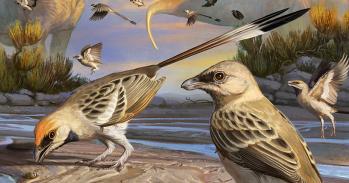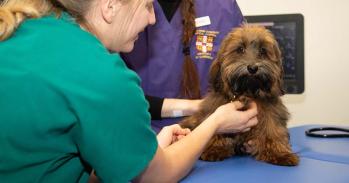
In the fifth report of our Egg Cetera series on egg-related research, engineers and zoologists work together to discover the secrets of the eggshell.
In the fifth report of our Egg Cetera series on egg-related research, engineers and zoologists work together to discover the secrets of the eggshell.
The egg’s ultimate task is to remain intact until the chick hatches, and what we’re discovering is that it achieves this through a number of finely tuned adaptations that make the avian egg remarkably strong in the face of diverse structural challenges.
The avian eggshell is curiously paradoxical: it protects the developing chick against physical damage and microbial attack, yet it is sufficiently porous to allow the chick within to breathe. It is constructed to withstand a surprising amount of physical force but is sufficiently fragile to allow the chick to emerge.
How is all of this accomplished? Finding the answer, we discovered, is as important to zoologists wanting to understand how birds break free of the egg as it is to engineers interested in developing new materials inspired by nature.
We have embarked on a collaboration that uses state-of-the-art materials characterisation techniques to determine the fine structure of the eggshell and to relate this to the shell’s extraordinary mechanical properties. In doing so, we’re spending a great deal of time and effort working to understand a material that is inexpensive and so ubiquitous that many of us encounter it daily.
Our first step was to devise a set-up in the mechanical testing lab to simulate a variety of mechanical challenges an egg might face in a real nest: everything from a poke from a predator’s claw to the force applied by an incubating parent. The egg’s ultimate task is to remain intact until the chick hatches, and what we’re discovering is that it achieves this through a number of finely tuned adaptations that make the avian egg remarkably strong in the face of diverse structural challenges.
One special characteristic of the eggshell is that its physical properties are affected by the arrangement of crystals in the shell’s microstructure, a phenomenon we’re exploring using mechanical tests and scanning electron microscopy. Another is the shape of the egg, which contributes to its strength. The ends of an egg are similar in shape to a three-dimensional dome – one of the strongest architectural structures – and our research is exploring how an egg, like a dome, distributes the load evenly to minimise strain.
Another key advantage to studying the avian egg is that it is similar in composition to other natural materials, like tooth enamel and seashell, which are made up of mostly hard and brittle mineral reinforced with just a few percent of protein. The key to the fracture resistance of these materials is in the mechanism by which these two dissimilar materials, protein and mineral, are organised at the smallest of length-scales. Eggshell is unique in that it represents one of the fastest biomineralisation rates known in nature: in a chicken, the eggshell forms completely in under 24 hours.
We want to know how eggshells can form so rapidly yet still possess such impressive physical properties. If we can understand this, and mimic natural processes such as eggshell biomineralisation, we would be a step closer to being able to provide new models for the creation of robust materials for the engineering industry while leaving a minimal carbon footprint. Natural materials are composites formed in near ambient conditions, which is quite different from the mechanism by which engineers usually make materials – using high temperatures and pressures. We are also making an eggshell-like material from scratch in the laboratory, tweaking parameters such as the precise temperature of formation of the protein-mineral composite.
A remarkable 150 million years of natural selection on the avian eggshell have engineered a strong, lightweight material that is energetically cheap to manufacture and adaptively fragile when necessary. Discovering exactly how this is accomplished will be of immense interest to biologists and engineers alike.
Dr Michelle Oyen, Dr Rebecca Kilner and Mary Caswell Stoddard together with Oliver Armitage and Sarah Greasley
Michelle Oyen is a Lecturer in Mechanics of Biological Materials in the Bioengineering group in the Engineering Department. Rebecca Kilner is a Reader in Evolutionary Biology in the Department of Zoology. Mary Caswell Stoddard is a Zoology PhD student investigating the evolution of colour, pattern and structure in avian eggs. Oliver Armitage is an MPhil student and Sarah Greasley is an MEng student, both in the Engineering Department.
This work is licensed under a Creative Commons Licence. If you use this content on your site please link back to this page.





